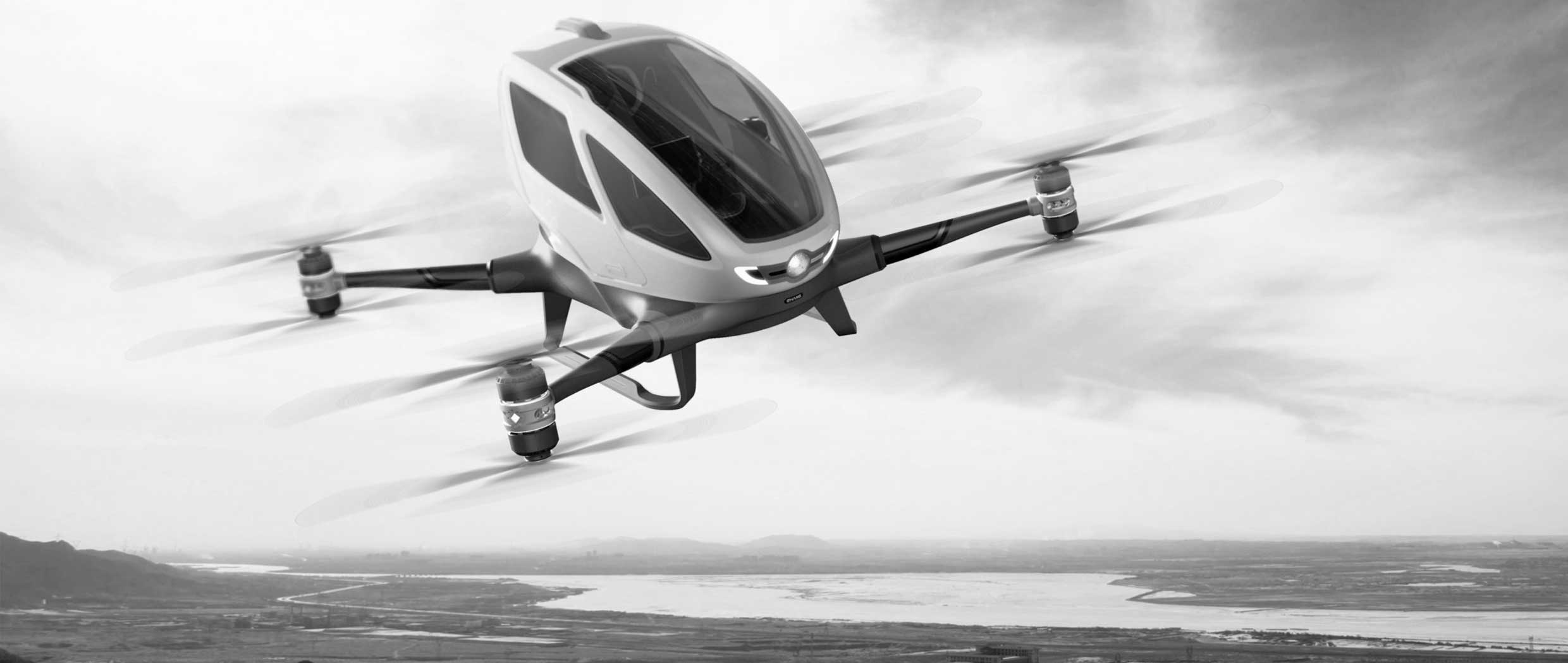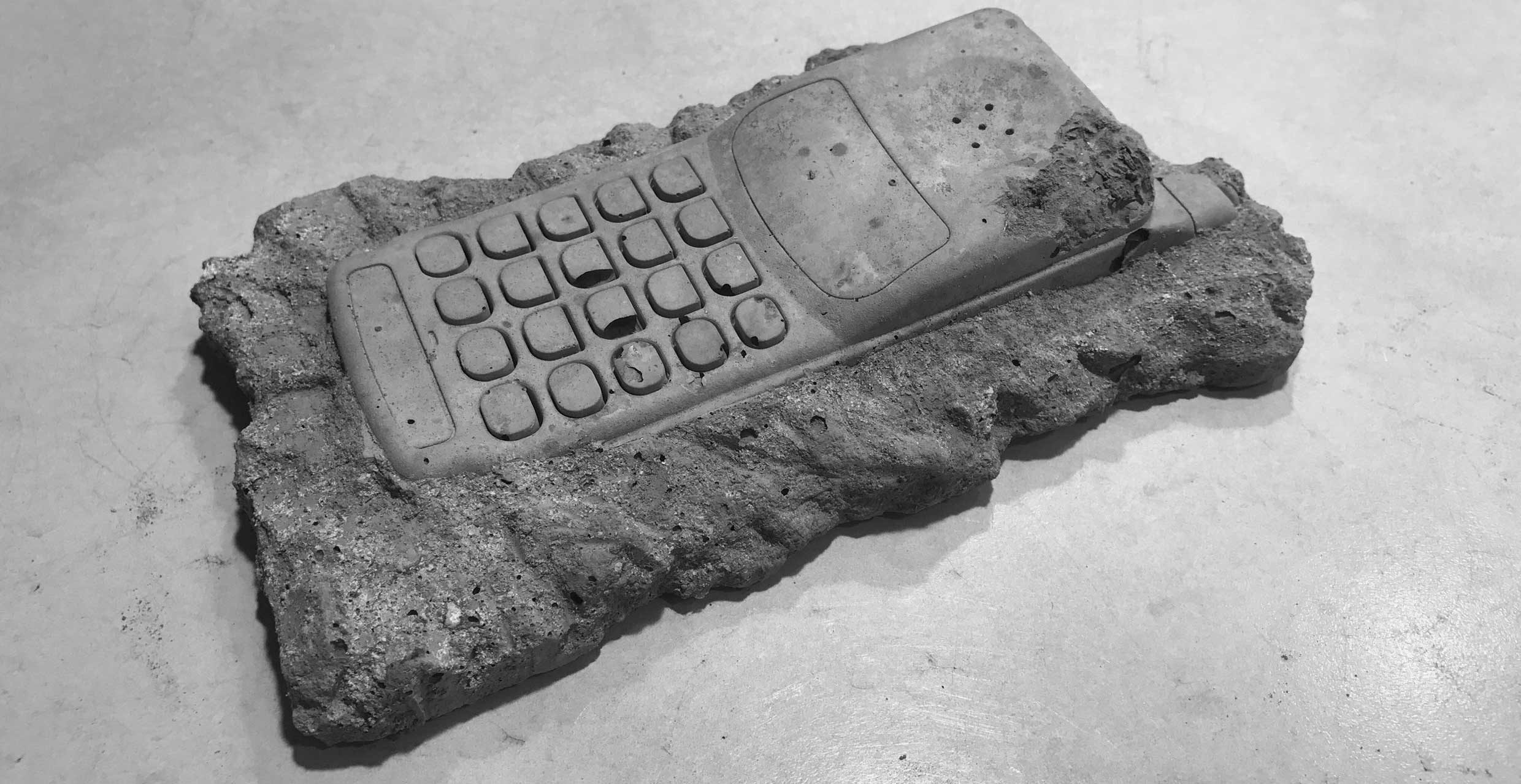Planes, trains, and automobiles. The three modes of transportation we’ve all used for the past hundred years. But, there’s a new form of travel being added to that roster, the Air Taxi. Taking influence from other VTOL Aircraft (vertical take-off and landing), the Air Taxi is like your own personal, electric helicopter. And they should be here within five years.
Air Taxi and VTOL Aircraft
You only have to visit a big city one time to realize the problem with transportation. In New York City, an hour car ride is not uncommon even if you’re going just a couple miles. The Tokyo train system has so many riders that there’s a concept known as “train stuffing” where guards will pack people into the cars.
The problem is only getting worse, as the UN predicts an additional half a billion people will migrate to cities by 2030, with Tokyo alone seeing an increase of 10 million residents.
That’s why Uber and NASA have teamed up to create an Air Taxi network that would alleviate some of the transportation stress.
Their initial concept of the Air Taxi is a mix between a toy drone and a helicopter. Ideally, it will hold 2-5 passengers with a 25-60 mile flight range – making it a great city VTOL Aircraft.
The Uber-NASA collaboration predicts they’ll be a realistic mode of transportation within five years, which seems ambitious. But, one of the other players in the VTOL Aircraft game, Volocopter, is already testing flights in Dubai. Additionally, Airbus expects to start running tests on their Air Taxis next year. So, maybe Uber’s CEO isn’t that far off with his prediction.
But, it doesn’t negate the amount of work that needs to be done.
Coming to a Roof Near You
We’re talking about creating an entirely new air traffic infrastructure, from designating landing ports to designing airways. Cartographers (mapmakers) are going to play a huge role in the success of Air Taxi transportation.
Realistically, we’ll need ports on the tops of a vast majority of buildings in a city.
Transportation is about efficiency and if you have to walk six blocks just to get to and from an Air Taxi port, then people won’t use it. But, if it’s a convenient amenity that sits at the top of every apartment building, then there’s no reason that Air Taxi travel won’t be a hit.
It’s also interesting to think about what traffic jams look like in the skies. The flying part seems easy and I could even see us taking influence from bird flying formations to make traveling in the skies efficient.
Where the real problem lies in the limited number of ports. Will the Air Taxi equivalent of a traffic jam be waiting for a place to park your VTOL Aircraft – idling above a port until a spot opens up? Wouldn’t that be ironic if we had the technology to fly around cities like The Jetsons but still couldn’t find a parking spot?
Uber’s estimate will likely come true, but not to the degree we think. Because creating air infrastructure is so complicated, Air Taxi transportation will start more entertaining than efficient. For instance, I see Groupon selling Air Taxi tickets on the proposition that it’s a fun thing to do with your family, like a boat tour. But, you don’t go on a boat tour to efficiently get around Chicago.
Quite frankly, I’d imagine that Air Taxi networks will service wealthier folks for many years before it becomes a reasonable transportation option for the average traveler.
Competing for the Sky
Let’s not forget that Air Taxis aren’t the only thing competing for city skies. Jeff Bezos and Amazon envision drones to be the future of package delivery. In fact, Airbus is creating plans for a project called Skyways which would be the infrastructure for parcel delivery in cities.
It’s easy to picture pure chaos in the skies with thousands of Air Taxis and drones flying around. Finding harmony in the sky just seems extremely difficult. Which is why I find Elon Musk’s idea of underground tunnel transportation to be a more practical option.
While cities have grown vertically, transportation has stayed horizontal – confined to surface-level, traffic-jammed roads. Both tunnels and the skies have a seemingly unlimited number of transportation layers. Thus, breaking the singular horizontal path into cities.
Like most things in life, there are multiple ways to approach the issue of transportation in cities. Regardless of whether tunnels or Air Taxis are the future of city transportation, it’s apparent that there’s a huge problem that needs to be solved.
Which is why I think it’s important that we all acknowledge the dichotomy of solving problems.
Two Ways of Approach
When it comes to most problems we encounter in life, I’ve found that they can either be solved as a technologist or a humanist. The technologist tends to solve problems from the outside-in – altering outer conditions and circumstances. While the humanist tends to solve problems from the inside-out – fixing their attitude and behaviors.
It’s something I always try to point out in Quick Theories that especially today, many people look to problems as only solvable by the technologist. We overlook the humanist.
For instance, perhaps changing people’s travel behaviors is a better way to alleviate these problems. Maybe it’s not.
Nonetheless, the technologist doesn’t have a complete monopoly on our problems. Sometimes an attitude change is the easiest answer. It’s important to harmonize the technologist and humanist in your own problem-solving ventures.
I hope you enjoyed this futuristic look at Air Taxis and I’d love to know what you think. Thanks for tuning in to this week’s Quick Theories.



And this is where comes design-thinking. The integration of technologist and humanist. While the technologist is attending to the problem from a solution standpoint (solve traffic jam, decrease time to arrival at destination drastically, create layers of commute above and below the surface, etc.), the humanist is supposed to recommend user experience based on functional need and end-user’s behavioral adaptability to new systems. A design-thinking expert will integrate these two attitudes and provide a framework for implementation and adoption together.
I do see FIFTH ELEMENT (the movie) ahead. And AI, autonomous driving, blockchain, human-machine interface and air-traffic-management3.0 will be keys to the future for VTOL.
Thanks again for another well thought-out article. I agree with you that air taxis will initially only be used by the wealthy and it will take decades before ordinary commuters will use them. As for the Musk deep tunnels idea I have my doubts. Even if he can dig deep enough how will he get people down to those tunnels efficiently? Wikipedia says there are 22 North American rapid transit systems with 2.7 billion annual riders in NYC to 6 million in Cleveland. They are mostly a stairway of two to get to. I have some suggestions: use fireman poles or chutes. Seriously I don’t think the deep tunnels will work. Why not, as you say, use the humanist approach? Telecommuting those jobs that don’t need a central work area. The centralized top down, chain of command that demands close supervision is archaic. Building a nationwide fiber optic network is a lot cheaper than tunnels. Telepresence is a proven technology and would solve so many more problems than just mass transit.